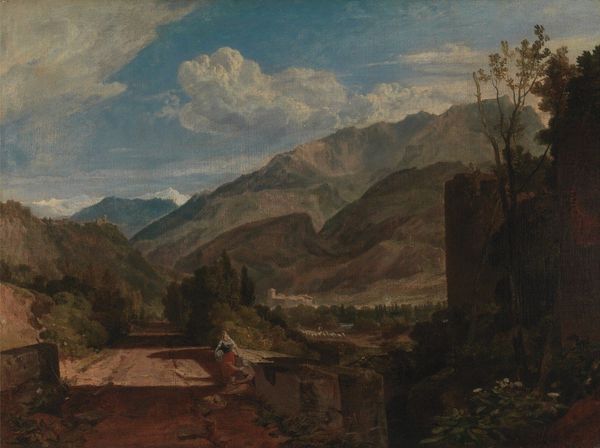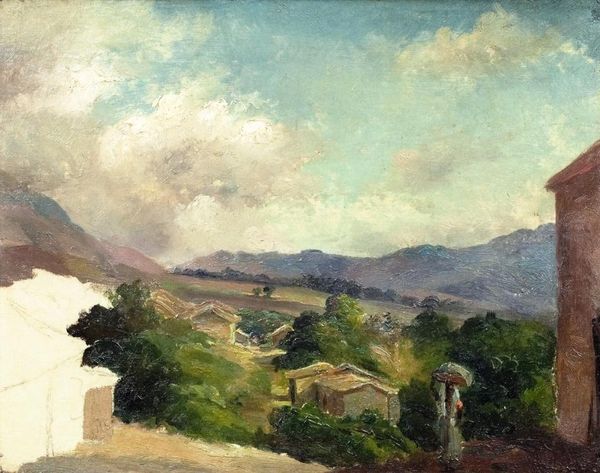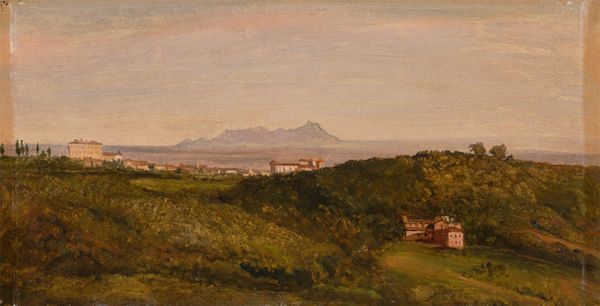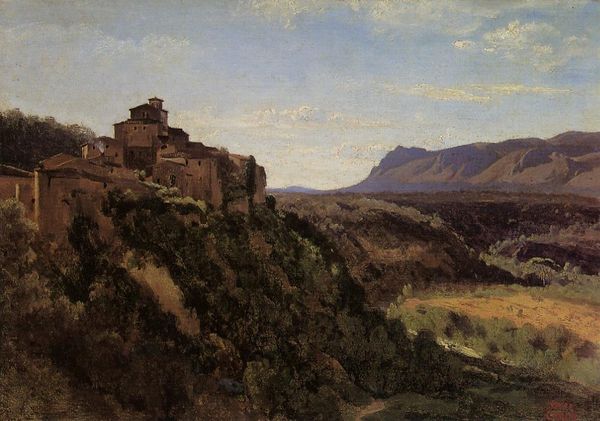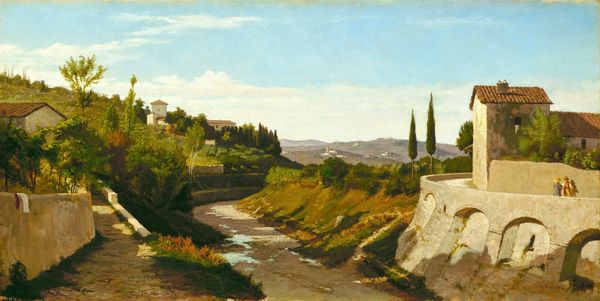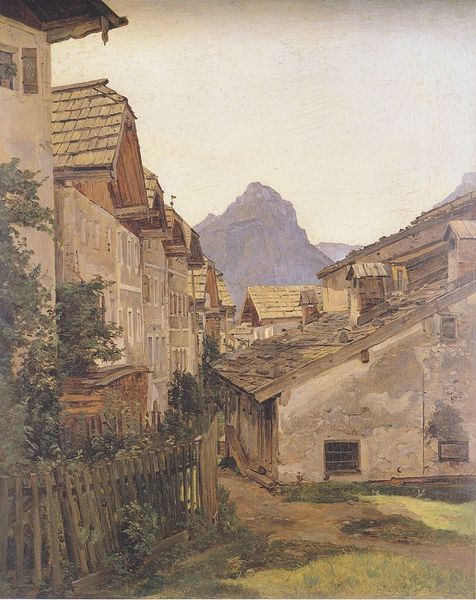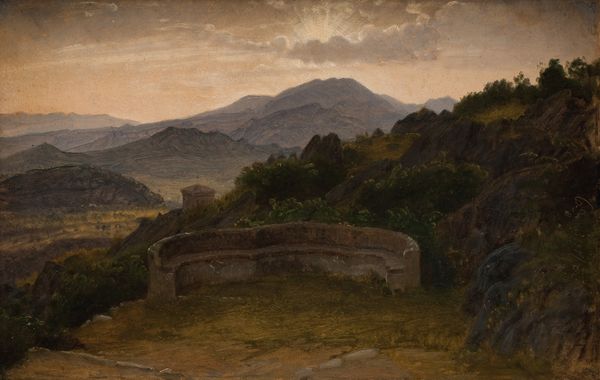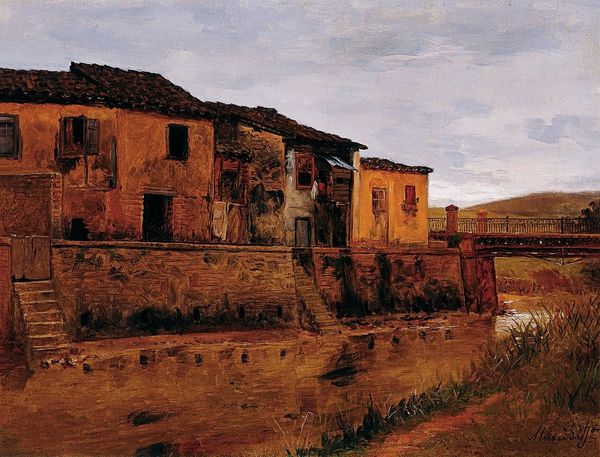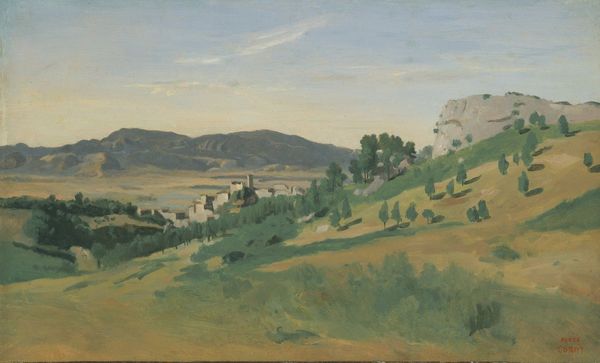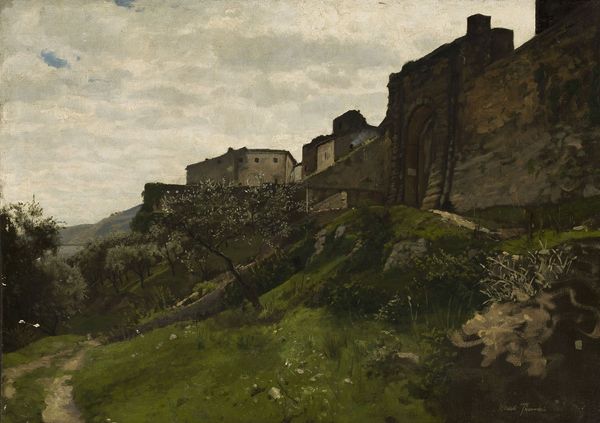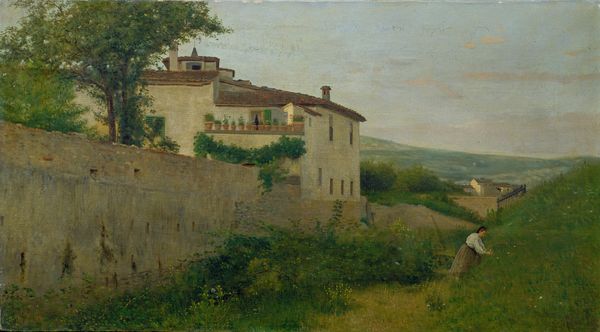
painting, plein-air, oil-paint
#
painting
#
plein-air
#
oil-paint
#
landscape
#
oil painting
#
romanticism
#
cityscape
#
realism
Copyright: Public Domain: Artvee
Curator: This is “Italian Landscape” by Wilhelm Marstrand. What do you make of it? Editor: The overwhelming stillness of the scene grabs me. I’m drawn to the earth tones, almost as if the buildings are rising naturally from the soil itself. What can you tell me about its cultural context? Curator: Marstrand painted this during a period of intense artistic interest in Italy, particularly the countryside and the romantic vision of its past. The play of light across the surfaces tells of plein-air painting, reflecting a turn to realism and a desire to depict landscapes as directly experienced. It ties into the wider trend of northern European artists heading south in search of artistic inspiration. Editor: The materiality speaks volumes. The textures – rough stone and unpaved street – signal a landscape shaped not just by nature, but by labor and human habitation. What I want to know is about Marstrand's specific processes. Were these canvases prepared beforehand in the studio, or were they genuinely worked on outdoors? Curator: We know Marstrand was experimenting with open-air work to bring authenticity. Yet, it fits into an artistic and social history marked by the growing market for landscapes which could also embody political and national sentiment. It wasn't purely about the physical experience of the location. Editor: Perhaps not entirely, but look at the composition itself. The way he layered paint gives texture to these weathered stones! There is almost a focus on recording the way that building materials decompose; I find it fascinating. I feel an almost tactile connection to this image; as though I am tracing the brushstrokes with my fingers. Curator: Indeed. But also, let’s not overlook how such a painting would function within exhibition spaces, galleries and collections. Here, it serves less as a truthful depiction, and more as an aesthetic encounter designed to inspire feelings connected with ideas about landscape, heritage, and national identity. Editor: Well, either way, seeing this breakdown of texture next to more classical themes sparks interest in the labor and practical challenges involved in creating work en plein air. Curator: It makes you think about art history, how styles get transmitted. Editor: Absolutely. The way art’s made, it always tells a wider story about what’s important and valued within a particular cultural environment. Thank you!
Comments
No comments
Be the first to comment and join the conversation on the ultimate creative platform.


